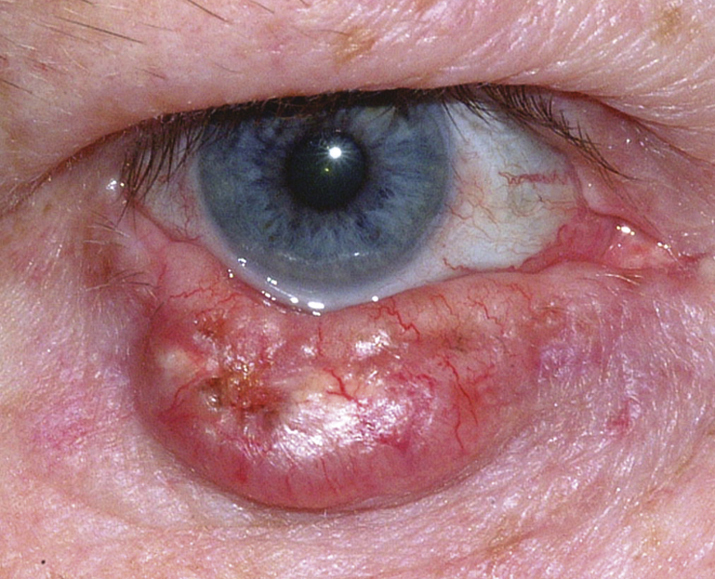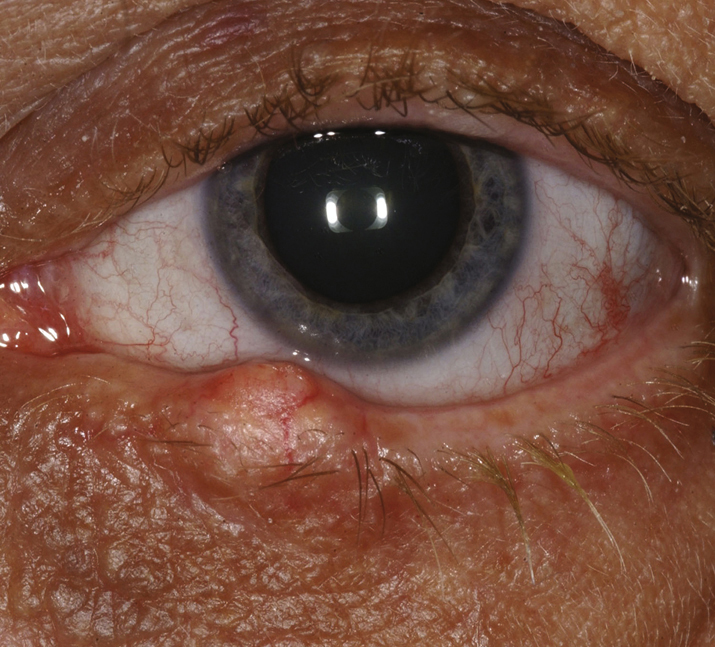- Basal cell carcinoma: Most common malignant eyelid tumor, usually on the lower eyelid or medial canthus of middle-aged or elderly patients. Rarely metastasizes, but may be locally invasive, particularly when present in the medial canthal region. There are two major forms:
- Nodular: Indurated, firm mass, commonly with telangiectasias over tumor margins. Sometimes the lesion center is ulcerated (see Figure 6.11.1). On rare occasions, a cystic variant is seen.
- Infiltrative: The classic variant of this form is the morpheaform lesion. A firm, flat, subcutaneous lesion with indistinct borders. More difficult to excise and may result in a large eyelid defect.
- Squamous cell carcinoma: Variable presentation, often appearing similar to basal cell carcinoma. Regional metastasis may occur and can be extensive with the propensity for perineural invasion. A premalignant lesion, actinic keratosis, may appear either as a scaly, erythematous flat lesion or as a cutaneous horn.
- Keratoacanthoma: This lesion was previously considered to be benign and self-limiting; however, it is now regarded as a low-grade squamous cell carcinoma. Clinically may resemble basal and squamous cell carcinomas. Typically, the lesion is elevated with rolled margins and a large central ulcer filled with keratin. Rapid growth with slow regression and even spontaneous resolution has been observed. Lesions usually involve the lower eyelid and can be destructive. Complete excision is recommended.
- Sebaceous carcinoma: More common in middle-aged or elderly patients, usually elderly women. Most common on the upper eyelid but may be multifocal, involving both the upper and the lower eyelids. Often confused with recurrent chalazia or intractable blepharitis. Loss of eyelashes and destruction of the meibomian gland orifices in the region of the tumor may occur. Regional and systemic metastasis or orbital extension is possible. Can occur many decades after prior radiation exposure to the eyelids (see Figure 6.11.2).
- Others: Malignant melanoma, lymphoma, sweat gland carcinoma, metastasis (usually breast or lung), Merkel cell tumor, Kaposi sarcoma, and others.

